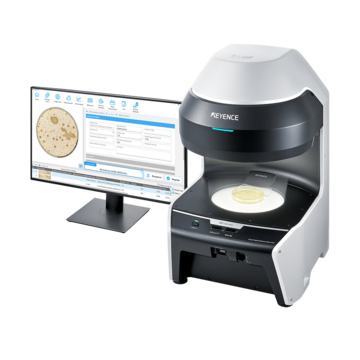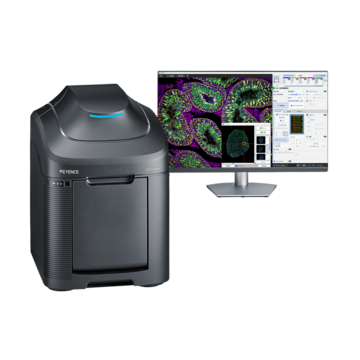Antibiotic Resistance Testing: How Colony Counters Improve Accuracy and Speed
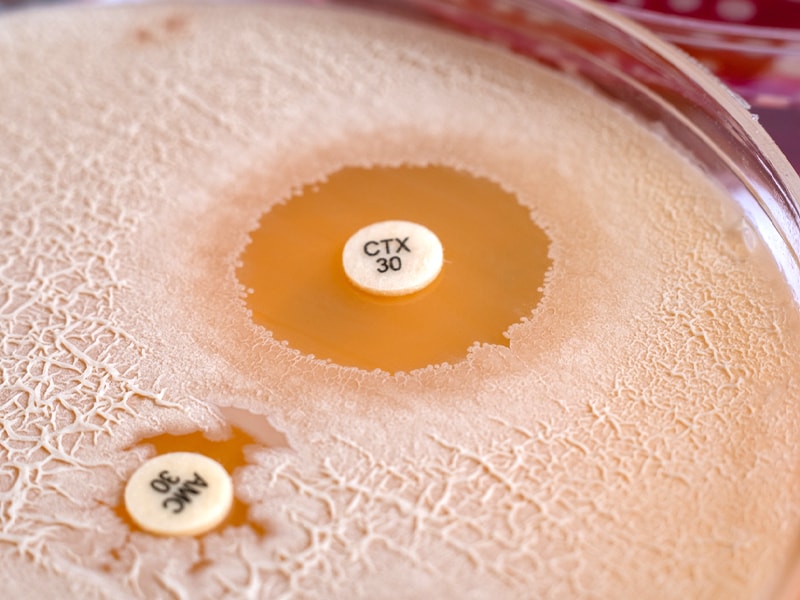
Antibiotic resistance is one of the most pressing challenges in global healthcare. Antibiotic-resistant bacteria make infections harder and more expensive to treat, leading to longer hospital stays, higher medical costs, and increased death rates. They threaten the success of surgeries, cancer treatments, and organ transplants by making routine infections potentially deadly. Resistance also spreads in communities and the environment, posing a serious global health and economic threat.
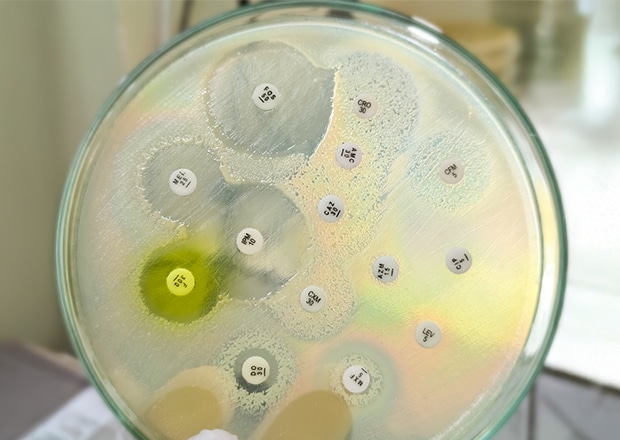
As bacteria evolve to resist previously effective treatments, the need for accurate, reliable testing methods becomes critical. Among the various tools used to monitor and evaluate bacterial behavior, colony counters play an essential role in antibiotic resistance testing, enabling scientists to precisely quantify bacterial growth and assess the effectiveness of antibiotics.
This article explores how antibiotic resistance testing is conducted and how modern colony counters support accurate evaluation.
What Is Antibiotic Resistance Testing?
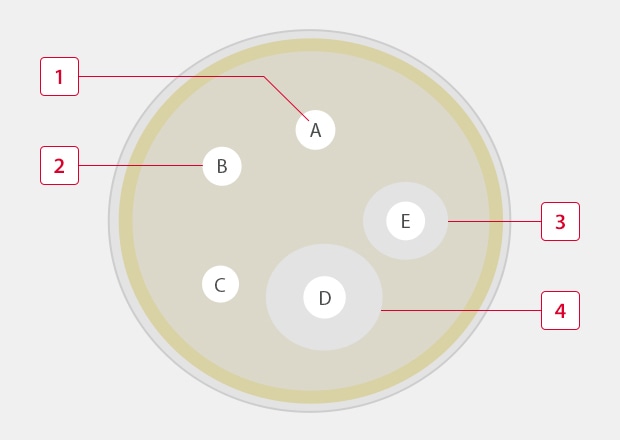
Antibiotic susceptibility test
Antibiotic resistance testing, often referred to as antimicrobial susceptibility testing (AST), is the process of determining how sensitive a bacterial strain is to specific antibiotics. These tests help clinicians select the most appropriate therapy and monitor resistance trends over time.
-
1Antibiotic
-
2Resistance
-
3Intermediate
-
4Sensitive
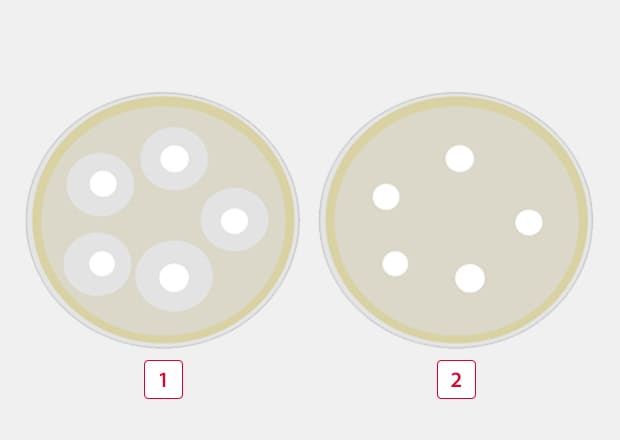
Disk Diffusion (Kirby-Bauer Method)
One of the most widely used techniques for determining the antibiotic susceptibility of bacteria. It provides a simple, standardized way to assess how effective different antibiotics are against a specific bacterial strain. Antibiotic-impregnated disks are placed on an agar plate inoculated with bacteria. The zone of inhibition around each disk indicates the effectiveness of the antibiotic.
-
1Antimicrobial Sensitivity
-
2Antimicrobial Resistance
Broth Dilution Tests
Bacteria are grown in liquid media with varying concentrations of antibiotics to determine the minimum inhibitory concentration (MIC) – the lowest concentration of a drug needed to stop visible growth of a bacterium.
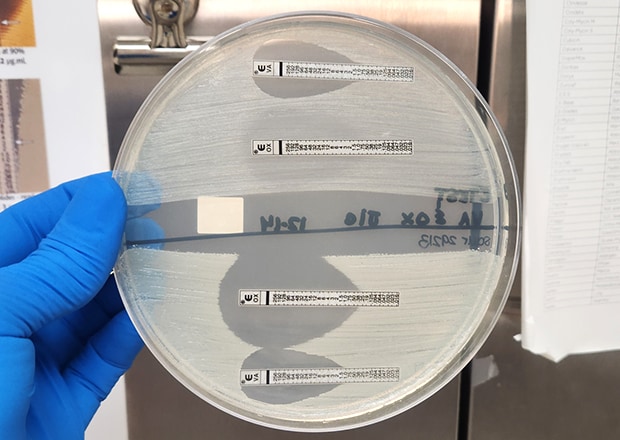
Example of an E-test using Methicillin sensitive and resistant staphylococcal isolates
E-test (Epsilometer Test)
A gradient method that combines aspects of disk diffusion and dilution methods to provide a direct MIC value. It involves placing a plastic strip with a gradient of antibiotic concentrations onto an agar plate inoculated with bacteria. After incubation, an elliptical zone of inhibition forms, and the MIC is read at the point where the bacterial growth touches the strip.
Automated Systems
Instruments that monitor bacterial growth in real-time in the presence of antibiotics.
Accurate quantification of bacterial colonies is vital across these methods, making colony counters indispensable in clinical and research laboratories.
The BC-1000 Series Automated Colony Counter can accurately and automatically detect and measure zone of inhibition in as little as one second!
Get detailed information on our products by downloading our catalog.
View Catalog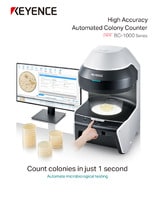

The Role of Colony Counters in Antibiotic Resistance Testing
Colony counters are devices designed to assist in the counting of bacterial colonies on agar plates. These devices improve the speed, consistency, and accuracy of colony enumeration, which is essential for reliable antibiotic resistance testing.
How Colony Counters Are Used:
-
1.
Disk Diffusion Analysis
After incubation, the zone of inhibition around antibiotic disks must be measured. Some advanced colony counters are equipped with imaging software that can automatically detect and measure inhibition zones, reducing human error and speeding up analysis. -
2.
Colony Counting in Dilution Tests
In dilution methods, the number of colonies growing at different antibiotic concentrations needs to be counted to determine the MIC. Automated colony counters quickly scan plates, differentiate colonies from background noise, and deliver accurate counts even on crowded or irregular plates. -
3.
Standardization of Results
Manual counting can vary between technicians, leading to inconsistencies. Automated colony counters standardize the process, ensuring repeatability across multiple tests and laboratories, which is crucial for clinical decision-making. -
4.
High-Throughput Testing
In research environments or large hospitals, dozens or even hundreds of plates may need to be analyzed daily. Colony counters enable high-throughput analysis, dramatically reducing the time and labor involved. -
5.
Digital Recordkeeping and Traceability
Modern colony counters often generate digital reports, images, and data logs that can be stored for quality control, regulatory compliance, or longitudinal studies on bacterial resistance trends.
The BC-1000 Series Automated Colony Counter captures images, measurements, and generates reports to provide a traceable data trail for regulatory compliance.
Curious about our pricing?
Click here to find out more.

Key Features of Modern Colony Counters for Antimicrobial Susceptibility Testing
High-Resolution Imaging for Precise AST Analysis
Modern colony counters are equipped with high-resolution cameras that capture detailed images of bacterial colonies and inhibition zones. High-quality imaging is essential for accurately identifying small colonies, assessing zone edges, and documenting results for audit and compliance in antimicrobial susceptibility testing.
Automatic Colony Recognition Based on Morphology
Using advanced image processing algorithms, modern systems automatically detect and classify bacterial colonies by size, shape, color, and texture. This automation increases throughput, minimizes manual counting errors, and ensures greater consistency across AST results, even when plates are crowded or colonies vary in appearance.
Accurate Zone Measurement Tools for Disk Diffusion Assays
Colony counters designed for AST include integrated zone measurement tools that automatically identify antibiotic disks and calculate inhibition zone diameters. Automated zone measurement improves the reproducibility of disk diffusion assays and eliminates the need for manual measurements, which can vary between operators.
Data Integration with Laboratory Information Management Systems (LIMS)
Modern colony counters facilitate direct export of colony counts, inhibition zone measurements, and image files to Laboratory Information Management Systems (LIMS) or Electronic Laboratory Notebooks (ELNs). This seamless data transfer supports regulatory compliance, improves traceability, and reduces the risk of transcription errors during testing.
Adjustable Sensitivity Settings for Diverse Sample Types
Recognizing the variability among bacterial strains and growth media, colony counters now feature adjustable sensitivity settings. Users can optimize detection parameters for different colony morphologies, including small, mucoid, pigmented, or irregular colonies, ensuring accurate counting and zone measurements across a broad range of AST applications.
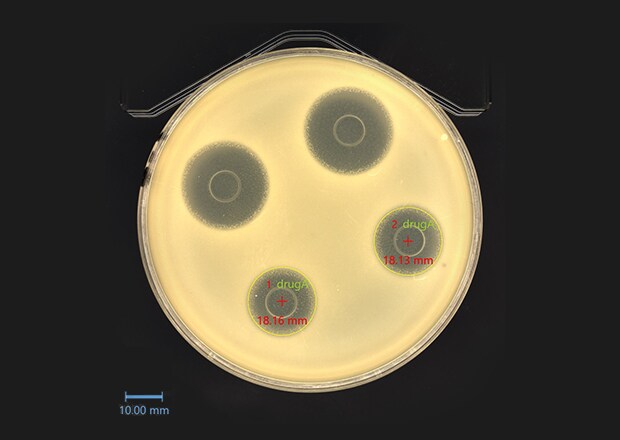
The BC-1000 Series Automated Colony Counter incorporates all of these features into an incredibly easy-to-use system – 20 MP camera and advanced optics for high-resolution imaging, algorithms for accurate detection and measurement of colonies and zones, common data format for easy export into LIMS, and ability to work on nearly any bacterial sample.
Discover more about this product.
Click here to book your demo.

Benefits of Using Colony Counters for Antibiotic Resistance Testing
Improved Accuracy
Colony counters help eliminate human error during colony counting. Manual counting can be influenced by factors such as fatigue, distractions, or varying personal judgment, which can lead to inconsistent results. Automated systems are designed to accurately detect and count bacterial colonies based on predefined criteria, ensuring that results are precise and reliable. This reduces the likelihood of false positives or negatives, which is especially important in antibiotic resistance testing, where small variations can have significant implications for diagnosis and treatment.
Time Efficiency
Manual colony counting is a labor-intensive task, often requiring a significant amount of time to analyze multiple plates. Automated colony counters can process large numbers of plates quickly, typically in seconds or minutes, compared to the several minutes or even hours it could take a technician to manually count colonies. This efficiency not only speeds up testing but also reduces the overall workload for laboratory staff. As a result, staff can focus on other critical tasks or process a higher volume of samples in the same amount of time, improving the overall throughput of the laboratory.
Enhanced Consistency
Human operators can have varying techniques and levels of skill when counting colonies, which can lead to discrepancies between operators or even within the same individual at different time points. Automated colony counters ensure consistent results by applying the same algorithms and detection criteria to each plate, regardless of who is operating the system or when the test is performed. This consistency is crucial in antibiotic resistance testing, where reproducible results are needed to track trends in resistance over time or across different patient populations.
Regulatory Compliance
Antibiotic resistance testing is governed by strict guidelines, such as the Clinical and Laboratory Standards Institute (CLSI) and the European Committee on Antimicrobial Susceptibility Testing (EUCAST). These organizations set standards for testing methods, including colony counting, to ensure accuracy and reliability in diagnostic processes. Automated colony counters help laboratories meet these standards by providing precise and reproducible results, which are often required for regulatory purposes. Additionally, the documentation and data generated by automated systems can make it easier to demonstrate compliance during inspections or audits.
Better Data Management
With automated colony counters, data collection and management become significantly easier and more streamlined. Digital systems often generate detailed records for each test, including images of the plates, colony counts, and other relevant parameters. This data can be stored in electronic lab notebooks or integrated with laboratory information management systems (LIMS). Such systems simplify the creation of audit trails, making it easier to track results over time, analyze trends, and provide the documentation required for regulatory compliance. Furthermore, automated systems can support longitudinal studies by maintaining consistent data over extended periods, ensuring that historical data is accessible for future comparison.
Automated Colony Counters – A Critical Tool for Antimicrobial Susceptibility Testing
Antibiotic resistance testing is critical for guiding effective treatments and monitoring emerging threats. Colony counters significantly enhance the accuracy, consistency, and efficiency of evaluating these tests, making them an essential tool in modern microbiology laboratories.
As technology advances, automated colony counters continue to evolve, integrating more sophisticated software, automation, and optics. Investing in advanced colony counting technology not only improves laboratory workflows but also contributes to the global fight against antibiotic resistance.
Contact us to learn more about how our advanced technology can help take your business to the next level.
Contact Us

